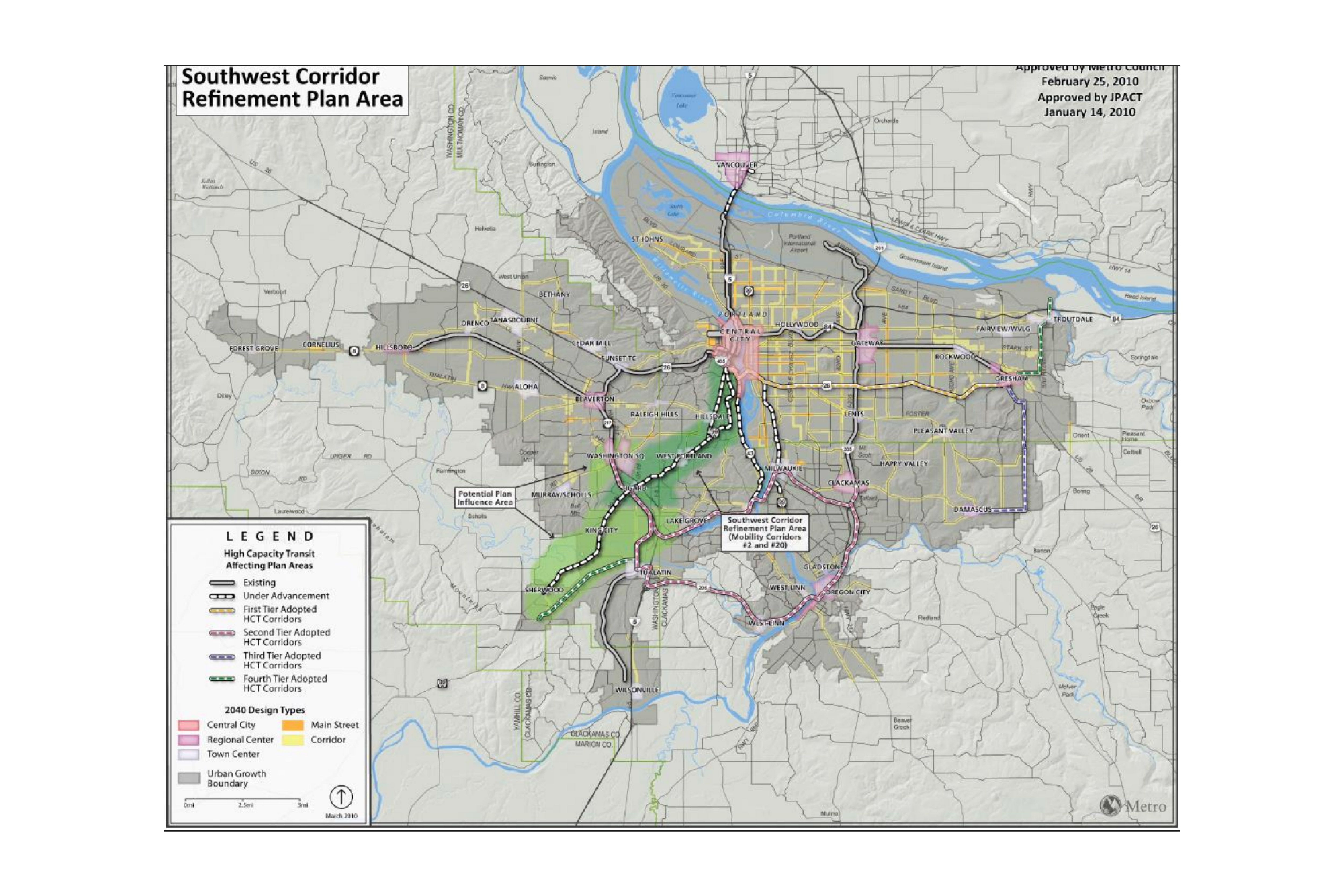Southwest Corridor Plan

Project Type: Land Use
Southwest Corridor Plan
The Southwest Corridor Plan is a comprehensive planning effort to help address the impacts of future growth while preserving great neighborhoods and creating more great places. It is a collaborative planning effort with Metro and local jurisdictions within the southwest Portland metropolitan region including Portland, Tigard, King City, Tualatin, Sherwood, and Oregon Department of Transportation.
Phase One
Phase One (completed in July 2013) identified a shared investment strategy with key investments in roadways, active transportation, parks, trails and nature as well as options for transit to be studied further. It also directed TriMet to undergo a broad update of existing local transit service in the corridor, as a first priority for transit. The Steering Committee also determined that two options for high capacity transit (HCT) should be evaluated as potential long range investments. The two HCT options being considered were bus rapid transit (BRT) and light rail transit (LRT) with connections from Portland to Tualatin, by way of the Tigard Triangle and Downtown Tigard.
Phase Two (Refinement Phase)
Phase Two (Refinement Phase) ended in June 2016. During this phase, decisions were made to narrow the possible transit alignment options and to select light rail instead of bus rapid transit as the best high capacity transit mode for the alignment. Alignment options removed during the Refinement Phase included three potential underground transit tunnels to Marquam Hill, Hillsdale town center, and the PCC Sylvania campus. Other adjustments to alignment options were made in and around downtown Tigard. The steering committee also set the preferred terminus—or end point—of the light rail project at Bridgeport Village, removing an extension into downtown Tualatin.
During the Refinement Phase project partners and public stakeholders continued to refine the set of bicycle, pedestrian and road projects that will contribute to improving transportation mobility and safety throughout the corridor. Some of these bicycle, pedestrian and road projects will be studied in the upcoming Draft Environmental Impact Statement, while the project team will continue seeking funding opportunities for the other projects.
Supporting Documents
 SW Corridor Presentation by Metro 6.4.13
SW Corridor Presentation by Metro 6.4.13
 SW Corridor Plan
SW Corridor Plan
 Sherwood Town Center Plan
Sherwood Town Center Plan
 Welcome to the City of Sherwood’s Notification System, the city’s latest tool for providing residents with immediate information and warnings on water contamination, extreme weather warnings, unexpected road closures, etc. This is a free service provided by the City of Sherwood.
Welcome to the City of Sherwood’s Notification System, the city’s latest tool for providing residents with immediate information and warnings on water contamination, extreme weather warnings, unexpected road closures, etc. This is a free service provided by the City of Sherwood.